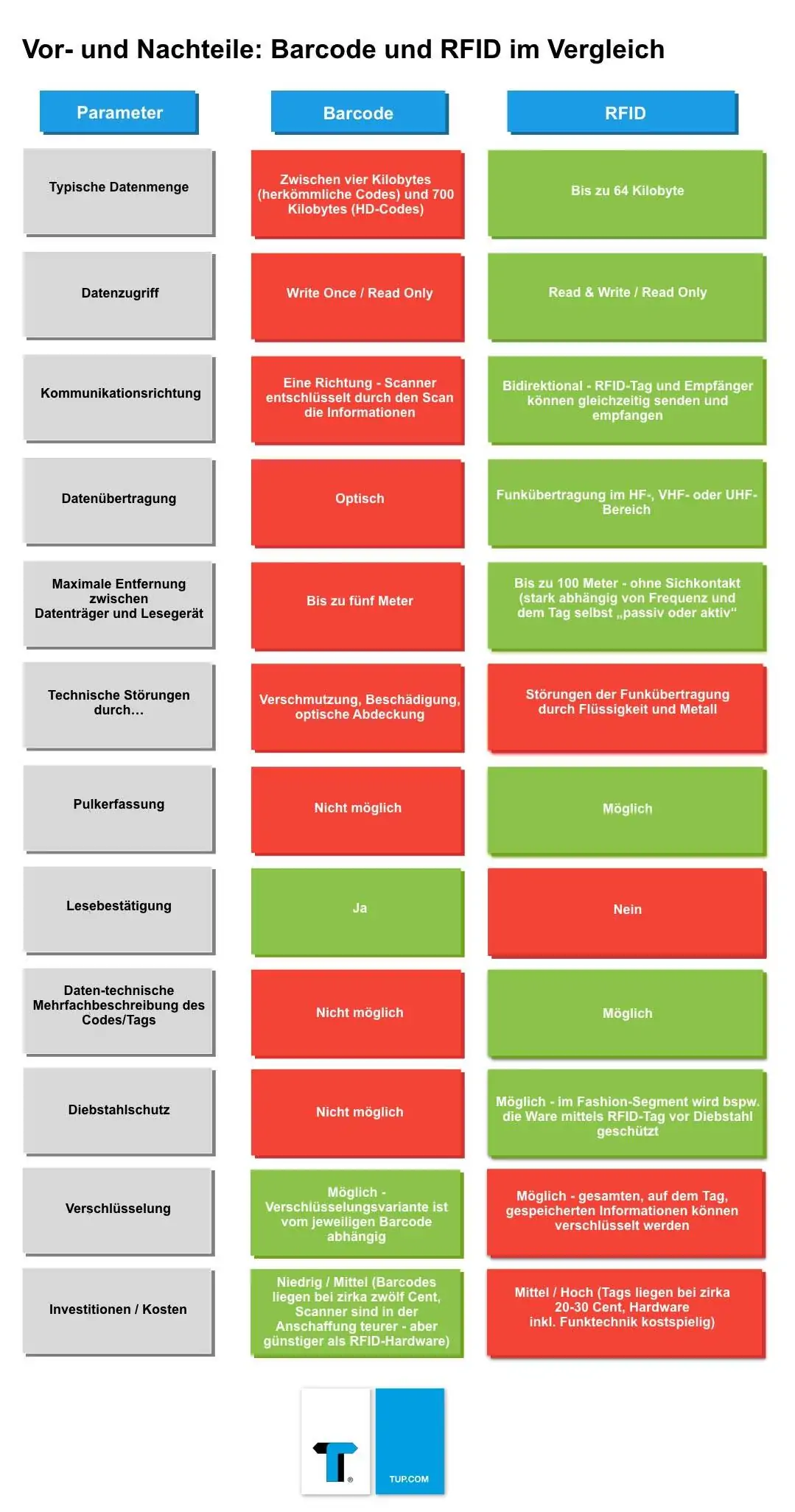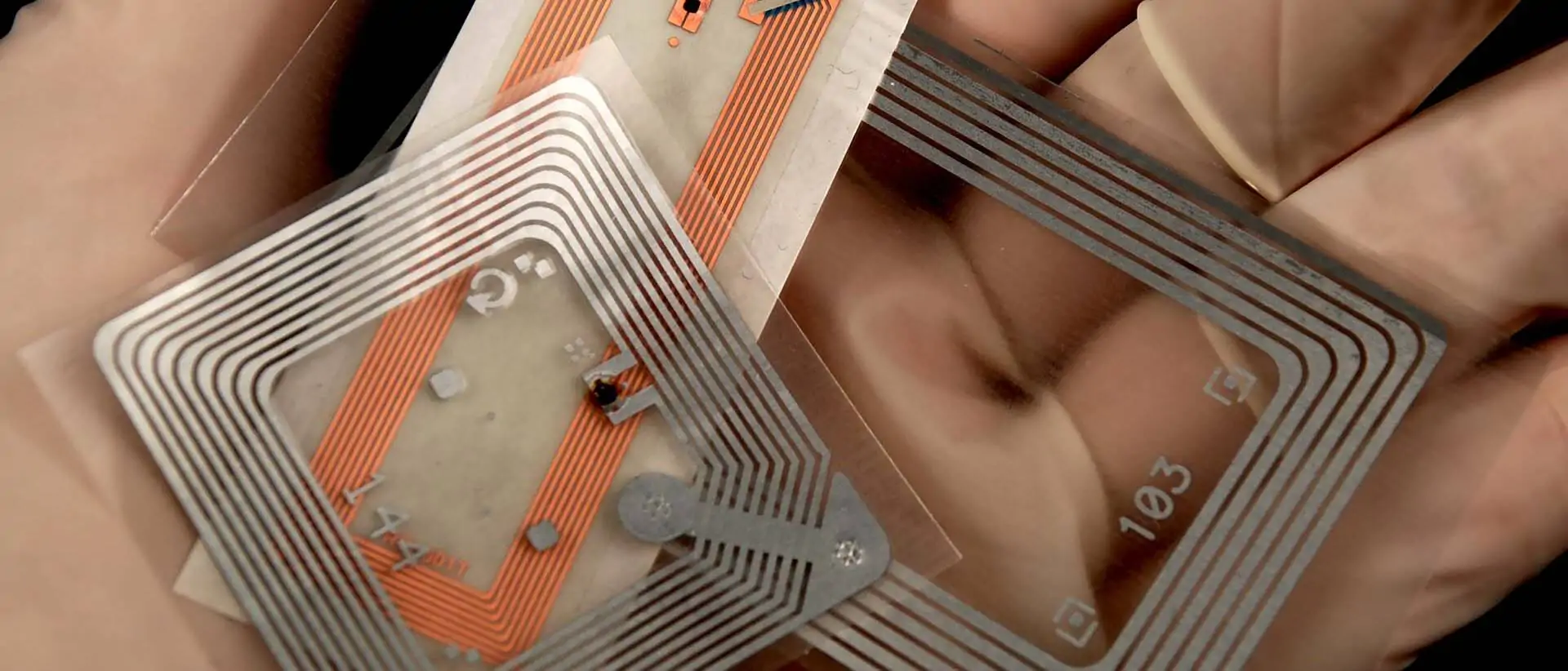What advantages does RFID radio technology have over barcodes? This question has also been occupying the intralogistics industry for some time. Generally, more information is available when RFID is used in conventional applications. In addition, logistical and production processes can be optimized faster and in real time thanks to the active exchange of information between RFID transponders. Radio transmission using RFID technology ensures, for example, that the flow of information accompanying the material (inventory management) is synchronized without delay with other, usually higher-level systems.
Industry 4.0 or the Internet of Things (IoT) is driving the automatic control and tracking of products throughout their entire life cycle. Retail, production and logistics are increasingly relying on RFID technology to track products seamlessly and in real-time. Radio technology is particularly suitable for a continuous flow of information, i.e. when information is automatically tapped. However, this requires the use of active transponders. They send and receive data simultaneously and exchange information continuously with transceiver units. In many cases, the latter are already connected to a warehouse management system, an ERP system or, directly at the point of sale (PoS), to a commercial system.
Expectations of RFID technology
- Accelerate processes
- Simplify processes
- Increase in performance/throughput
- Minimize reading errors
- Improve information content, information flow
- Increase transparency
The decisive advantages of RFID technology are
- Contactless identification (even without visual contact)
- Transmit and receive signals penetrate various materials (cardboard, wood, plastic, clothing fabrics)
- Transponders can be read and written
- In some cases, the detection of RFID-tagged objects is up to 20 times faster than with barcodes
- Simultaneous detection of many transponders (bulk detection)
- The shape and size of the transponder can be customized in some cases
- Transponders can be implemented directly into the product
- High security through copy protection
- Encryption of information
- Data can be stored directly on the chip – no external database is required
- It is possible to read an RFID tag even if it is dirty
- The placement of the object to be detected is less problematic than with barcodes. It is sufficient for the object to be within the reading distance of the detection unit
Barcode and RFID: two technologies, one intralogistics world
Modern and future-proof logistics projects require a wide range of information about the product itself, the current product status, product quality and process progress. A decisive advantage of RFID is that information can be stored directly on the product and added to during the process. Unlike with barcodes, the information does not have to be sent in parallel, for example by means of notification, and stored in a database. Rather, all the information can be stored and retrieved independently of the system on the RFID tag and, if necessary, transferred to the system for which it is intended. However, the system in question must be able to interpret and read the data structure.
Another advantage of RFID tags is the possibility of perceiving environmental influences or physical quantities (environmental measurement). In this way, vibrations and temperatures, for example, can be measured, stored and read. For this purpose, the tags are equipped with additional components, so-called sensors (sensor RFID). If, for example, inventory must be transported within a specified cold chain, the RFID tag uses sensors to store any temperature deviations. These are either transmitted to the recipient during transport via a mobile communications interface or read directly at goods receipt. In extreme cases, the recipient could reject delivered goods before storage due to a so-called “break in the transport chain”.

Barcodes and their justification
Nevertheless, barcode technology will continue to be used in many areas in the future. For example, the GS1 standard allows for a verifiable error-free recording of the barcode and the associated data (batch/batch number, shelf life, article description, transport unit, identification and classification number, lot number and net weight, etc.). In addition, storage location management and picking are controlled by barcodes in most distribution centers, regardless of the degree of automation. The reason for this is that storage location management and picking usually revolve around confirmation after the item has been picked and around the marriage of storage locations with the stored goods. On the one hand, the read confirmation or the confirmation after the scan, both of which are not generally supported by RFID tags, are important aspects for the use of barcode technology. On the other hand, the more cost-effective barcode as a data carrier, including the necessary hardware (scanner), is likely to continue to be an important argument for many logistics planners. Otherwise, not only would every product have to be equipped with a more expensive RFID tag, but the storage location would also have to be equipped with the radio standard.
Important: HD barcodes are now being used more and more frequently. They have a storage capacity of over 700 kilobytes. However, in contrast to RFID tags, not all of the stored information can be read by every scanner.
In practice, barcodes are displayed in addition to the code with a numerical sequence. If the barcode is not readable, the number combination provides another means of identification. If an RFID transponder is defective, however, the inventory is left without a name or address.
If you are interested in labeling stored goods, read the detailed article on inventory management.
Image source: © Felix Pergande – Fotolia.com
